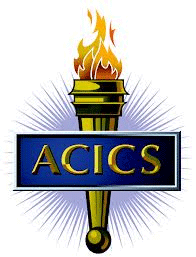
Fallout From For-Profit College Chain’s Closure Could Have Been Prevented
The announcement on Wednesday that the Education Corporation of America was closing some 70 colleges that it owns was a big shock to tens of thousands of students and employees on those campuses. It was much less of a surprise to some higher-education experts who have been following the company’s recent troubles.
“When you look at the outcomes for the ECA schools, they’re challenging at best,” said Steve Gunderson, chief executive of Career Education Colleges and Universities, a trade group that lobbies for such institutions. Enrollment had been plunging at the company’s institutions, he said, and “everyone knew they had financial problems.”
Antoinette Flores, who researches higher-education policy at the Center for American Progress, explained that the U.S. Department of Education placed financial restrictions on the colleges nearly a year ago because of ECA’s struggles. “The writing has been on the wall for a long time,” she said.
Given the many warning signs, the company, the accreditor of those colleges, and the Education Department could have done much more to protect the students, said both Flores and Gunderson. An estimated 19,000 students were enrolled in the various chains of the for-profit education company, and many are left wondering if, when, and where they will be able to finish their degrees.
“No parties were focused on students,” Gunderson said. “They may say they meant to, but if the students were at the center of the desired outcomes, this would have all been different.”
Struggles
The closure followed several months of uncertainty and financial distress. In September the company announced that it planned to close about two dozen campuses by early 2020. At the same time the Accrediting Council for Independent Colleges and Schools, the company’s accreditor, penalized its Virginia College chain. That sanction, a “show cause” order, often leads to the loss of accreditation and subsequent closure of an institution.
In October the company sued the Education Department, seeking a judgment that it would remain eligible for federal student-aid dollars under a plan to restructure its finances. The lawsuit said that the company could no longer pay its creditors and was facing several suits and even eviction notices at some locations.
Last month, however, a judge dismissed the suit and appointed a receiver to manage the company’s debts. The final straw came on Tuesday, when Acics, as the accreditor is known, suspended the accreditation of the Virginia College chain, in part because ECA could no longer pay its fees to the council.
Only at that point did the accreditor require the company to arrange formal agreements with other colleges under which students could complete their programs. The teach-out plan required under the earlier show-cause order is typically just a plan, Flores said, and doesn’t mean much in practice unless other institutions have agreed to accept students.
The Education Department, which had been “in daily conversations” with the company and other colleges to arrange teach-out partners, blasted ECA for the closures. “Instead of taking the next few months to close in an orderly fashion, ECA took the easy way out and left 19,000 students scrambling to find a way to finish the education program they started,” said a prepared statement from the department.
“The department is ready to help ECA students with either transferring their credits to new schools or applying for closed-school discharges,” the statement said.
Failures
For both Flores and Gunderson, often on opposite sides of the debate over government regulation, the situation represents missed opportunities.
Gunderson said that the department needed an Office of Continuing Education that could provide “intervention and cooperation” for career colleges on the path to closure.
In addition, he said, the regulations on accreditation should be changed to make it easier for other colleges to assist in teach-outs. Some colleges that want to help are constrained because they can’t quickly start an academic program and have it approved by an accreditor.
In other cases, Gunderson said, colleges that would like to help may need some financial assistance from the department to cover the initial costs of extra students and faculty members. Such an option would be a lot less expensive than the loan forgiveness that the department would have to offer to students after a college closes.
Flores sees a different set of problems. The accreditor and the department, for instance, could have pushed for more detailed teach-out agreements many months ago.
But at the root of the issue, she said, is the department’s decision to extend the recognition of the accrediting agency, which had been denied recognition under the Obama administration.
After a lawsuit, requiring a second decision by the department, officials chose earlier this year to allow Acics to continue operating, despite a long history of giving troubled colleges access to federal dollars and a report from department staff members that recommended denying federal recognition.
Acics has rarely taken the appropriate and timely steps to penalize institutions without action from another entity, Flores said. “At every turn, in every instance where a school has had problems, it’s always been another institution that prompts action by the accreditor, not the agency on its own.”
Department officials were aware of the problems on the ECA campuses, Flores said, but “they focused on protecting the school and saving the accreditor.”
“If Acics is not reinstated,” she said, “we’re not having this conversation.”
Correction (12/7/2018, 10:02 a.m.): This article originally said that the accreditor didn’t require a teach-out plan until it suspended the accreditation of the Virginia College chain, on Tuesday. A teach-out plan had been sought as part of the accreditor’s “show cause” order, in September. The article has been updated to reflect that.
